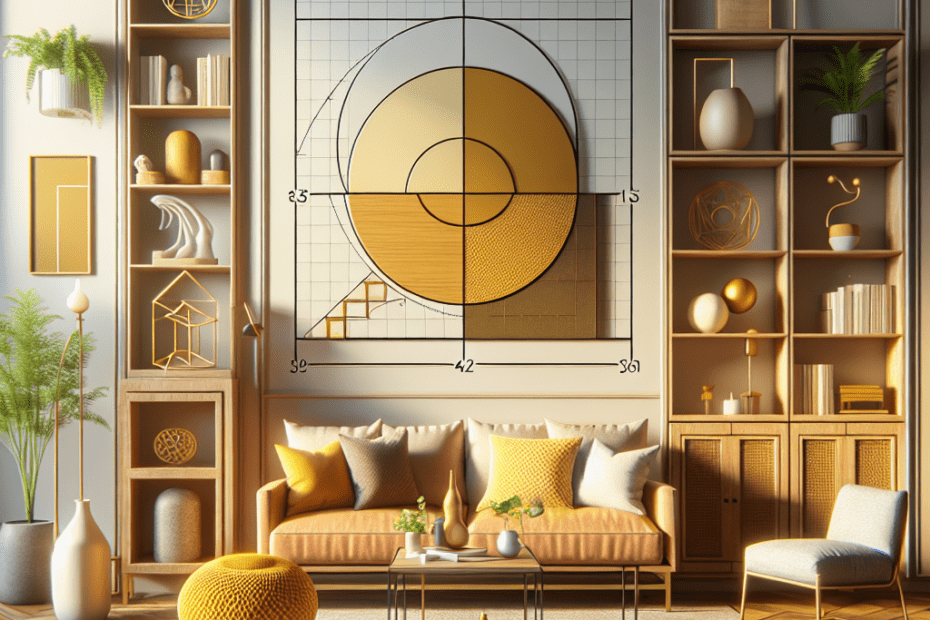Using the Golden Ratio in Design for Room Styling
One of the most fascinating principles in design and architecture is the Golden Ratio, a mathematical concept that has been used for centuries to create aesthetically pleasing compositions. Known for its harmonious proportions, the Golden Ratio can be an invaluable tool when styling a room. By applying this timeless principle, anyone can transform a space into a visually balanced and beautiful environment.
Understanding the Golden Ratio
The Golden Ratio, often represented by the Greek letter Phi (φ), is approximately equal to 1.618. This ratio can be found in nature, art, and architecture. From the pyramids of Egypt to the Mona Lisa, many masterpieces owe their balanced designs to this geometric principle. When they use the Golden Ratio, they align elements to create harmony and cohesion.
How to Implement the Golden Ratio in Room Design
To style a room using the Golden Ratio, they can apply this mathematical concept in various ways. Here are some practical tips:
- Divide Room Elements Proportionally: They can start by dividing the room into segments using the ratio of 1:1.618. For example, in a living room, the larger segment could be allocated for furniture, while the smaller could serve as walking space or an art gallery.
- Use Fibonacci Sequence: The Fibonacci sequence, which closely relates to the Golden Ratio, can guide the placement and size of accessories. For instance, they might choose a 5-inch vase, an 8-inch candle holder, and a 13-inch lamp to create a visually pleasing vignette.
- Color and Pattern Choices: When selecting colors and patterns, they should prioritize balance. They might divide their wall colors following the Golden Ratio to determine the primary, secondary, and accent hues.
The Effectiveness of the Golden Ratio
Many designers swear by the Golden Ratio for its effectiveness. According to a study from the University of Washington, compositions that incorporate this ratio are 36% more likely to be perceived as aesthetically pleasing compared to those that do not (Source). As they apply these principles in room styling, they often find a significant improvement in the room’s allure and aesthetic coherence.
Examples of Golden Ratio in Interior Design
Several notable designers and architects have applied the Golden Ratio successfully:
| Designer/Architect | Project | Golden Ratio Elements |
|---|---|---|
| Le Corbusier | Villa Savoye | Proportional Spaces |
| Frank Lloyd Wright | Fallingwater | Window Placement |
| Michelangelo | Ceiling of the Sistine Chapel | Panel Layout |
Key Takeaways
- The Golden Ratio is a mathematical principle used for achieving balanced and aesthetically pleasing designs.
- In room design, they can use it to proportionally divide spaces, select furniture sizes, and choose color schemes.
- Studies show that designs utilizing the Golden Ratio are more likely to be perceived as harmonious and appealing.
- Famous architects and designers, from Le Corbusier to Frank Lloyd Wright, have used the Golden Ratio in their projects.
Frequently Asked Questions
- What is the Golden Ratio in simple terms?
The Golden Ratio is a special number, around 1.618, that helps create balanced and natural-looking designs. - How can they use the Golden Ratio in small spaces?
They can apply the Golden Ratio to choose proportional furniture and wall colors, helping smaller spaces feel larger and more cohesive. - Can the Golden Ratio improve color choices in a room?
Yes, by using the ratio to balance primary, secondary, and accent colors, they can create harmony in the room’s visual flow. - Is it necessary to always use the Golden Ratio in design?
While it’s not mandatory, using the Golden Ratio can help create more appealing and well-proportioned designs. - What is a practical example of the Golden Ratio in nature?
A practical example is the way many flowers form their petals or leaves, often following a spiral pattern that adheres to the Fibonacci sequence, which relates to the Golden Ratio.
